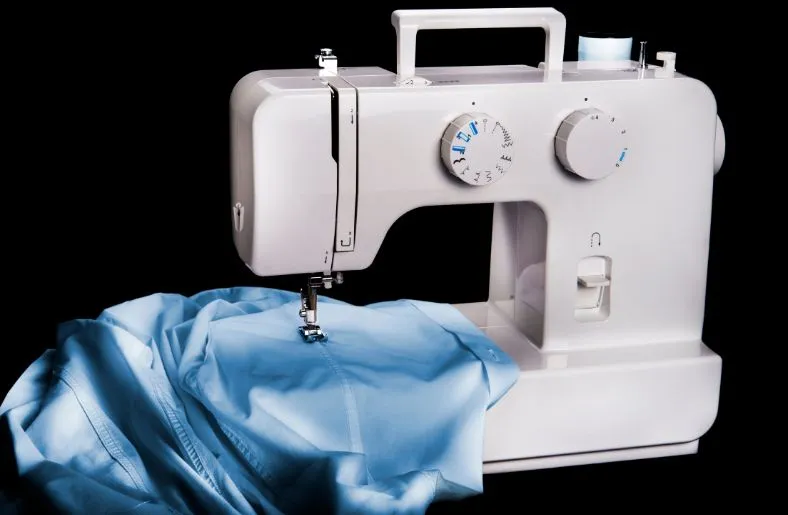Sewing enthusiasts understand the importance of maintaining their machines to ensure smooth and efficient operation. One crucial aspect of sewing machine maintenance is proper lubrication, and the Kenmore sewing machine is no exception. Regular oiling is essential to keep your Kenmore sewing machine running smoothly, reduce friction, and extend its lifespan.
In this comprehensive guide, we’ll walk you through the step-by-step process of how to oil Kenmore sewing machine, helping you maintain its optimal performance.
Table of Contents
Why Oil Your Kenmore Sewing Machine?
Before delving into the specifics of how to oil kenmore sewing machine, it’s important to understand why this maintenance task is crucial. Oiling serves several purposes, including:
- Reducing Friction: Moving parts in a sewing machine can create friction, leading to wear and tear over time. Proper lubrication minimizes friction, allowing the components to work seamlessly.
- Preventing Rust: Sewing machines, like any metal equipment, are susceptible to rust. The oil forms a protective barrier, preventing the formation of rust and corrosion.
- Ensuring Smooth Operation: Oiling your Kenmore sewing machine ensures that all the components work together harmoniously, resulting in smooth and efficient operation.
- Extending Machine Lifespan: Regular maintenance, including oiling, can significantly extend the lifespan of your sewing machine. By preventing excessive wear, you’ll reduce the likelihood of breakdowns and the need for costly repairs.
How to Oil Kenmore Sewing Machine: A Step-by-Step Guide
Now, let’s move on to the step-by-step guide on how to oil Kenmore sewing machine.
Step 1: Gather the Necessary Supplies
Before you begin the oiling process, gather the following supplies:
- Sewing Machine Oil: Use a high-quality sewing machine oil recommended for your Kenmore model.
- Lint-Free Cloth or Q-Tips: These will help you apply the oil precisely and clean any excess.
- Screwdriver: You may need a screwdriver to access certain parts of the machine.
- User Manual: Refer to your Kenmore sewing machine’s user manual for specific instructions and guidelines.
Step 2: Prepare Your Work Area
Ensure that your work area is clean, well-lit, and free from distractions. Place your sewing machine on a stable surface and have enough space to move around it comfortably.
Step 3: Refer to the User Manual
Consult your Kenmore sewing machine’s user manual for model-specific instructions on oiling. Different models may have varying oiling points and recommendations, so it’s essential to follow the manufacturer’s guidelines.
Step 4: Power Off and Unplug the Machine
For safety reasons, turn off your sewing machine and unplug it from the power source. This prevents any accidental activation while you’re performing maintenance.
Step 5: Remove the Needle and Presser Foot
Take out the needle and presser foot to access the machine’s interior easily. This step is especially important if your user manual recommends it for your specific model.
Step 6: Remove the Bobbin Case and Bobbin
If applicable to your Kenmore model, remove the bobbin case and bobbin. This step allows you better access to the internal components that require oiling.
Step 7: Identify Oiling Points
Carefully examine your sewing machine to identify the oiling points. Common areas that require lubrication include:
- Rotating Shafts: Look for any rotating shafts or joints in the machine.
- Gears: Gears are critical components that benefit from proper lubrication.
- Needle Bar: The needle bar is a moving part that also requires oiling.
Refer to your user manual for specific guidance on the oiling points for your Kenmore sewing machine model.
Step 8: Apply Oil
Using the sewing machine oil and a lint-free cloth or Q-tip, apply a small amount of oil to each identified oiling point. Be cautious not to overapply, as excess oil can attract dust and lint, leading to potential issues.
Step 9: Distribute Oil
After applying oil to the designated points, manually move the machine’s mechanisms to distribute the oil evenly. This helps ensure that all moving parts receive adequate lubrication.
Related Guide: Debunking the Myth: Will Engine Flush Damage Engine (2023-2024)?
Step 10: Clean Excess Oil
Wipe away any excess oil with a lint-free cloth or Q-tip. It’s essential to keep the machine clean to prevent the accumulation of lint and dust.
Step 11: Reassemble the Machine
Once you’ve completed the oiling process, reassemble your Kenmore sewing machine by replacing the bobbin, bobbin case, needle, and presser foot.
Step 12: Test the Machine
Before starting a new sewing project, run a few test stitches to ensure that the machine operates smoothly. This allows you to identify any issues and address them before working on your actual project.
Step 13: Establish a Regular Maintenance Schedule
To keep your Kenmore sewing machine in top condition, establish a regular maintenance schedule. Depending on your usage, aim to oil your machine every 8–10 hours of sewing or as recommended in your user manual.
FAQs
1. Which parts of the sewing machine need oil?
Generally, the parts of a sewing machine that need to be oiled and lubricated are moving metal parts. These may include the shaft where the needle goes up and down, the feed dogs, and the metal bobbin case.
2. What happens when a sewing machine needs oil?
Long-term lack of lubrication will result in wear of shafts and gears that are expensive to replace. We recommend you clean under the bobbin case every few bobbins, add a drop or two of oil to the wick under the bobbin case if it looks dry, and a good servicing annually for your machine as a rule of thumb.
3. Should you oil the internal parts of a sewing machine?
Oil is needed on every metal-on-metal moving part you can access. Some sewing machine models allow strip-down; some users may be able to gain internal access further than others.
4. How long is sewing machine oil good for?
On average sewing machine oil lasts for around five years. However, if your oil isn’t stored properly that lifespan can be shortened. To have the longest life for your machine oil it’s recommended to not store your oil in extreme temperatures or direct sunlight.
5. Which oil is used for the sewing machine?
Many different types of oils may be used in sewing machines, including 3-in-1 oil, mineral oil, and lightweight machine oil. 3-in-1 oil is a multi-purpose oil that is commonly used for lubricating small engines, chains, and other mechanical parts.
6. What part of the sewing machine should be avoided when oiling?
Do not put oil on the needle, bobbin, presser foot, or plate, as it will stain your fabric.
Conclusion
Properly maintaining your Kenmore sewing machine through regular oiling is a simple yet effective way to ensure its longevity and optimal performance. By following the step-by-step guide on how to oil the Kenmore sewing machine in this blog post, you can confidently take charge of your sewing machine’s maintenance, reducing the risk of wear, tear, and unexpected breakdowns.
Remember to consult your user manual for model-specific instructions, and don’t hesitate to reach out to Kenmore customer support if you have any concerns or questions about your sewing machine’s maintenance. Happy sewing!

